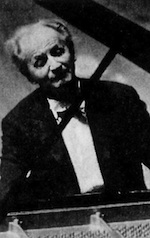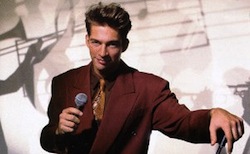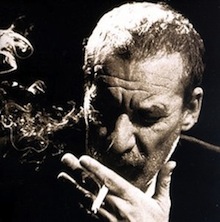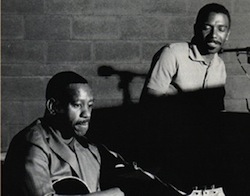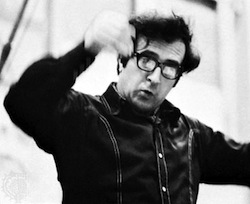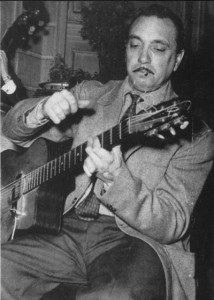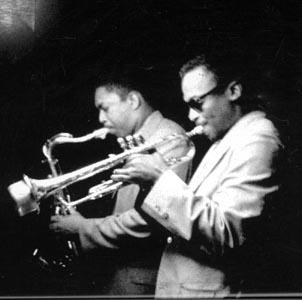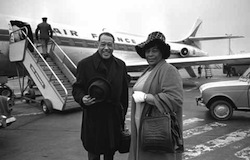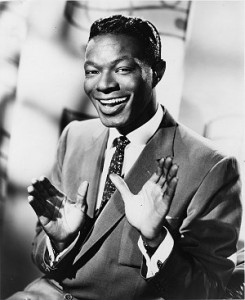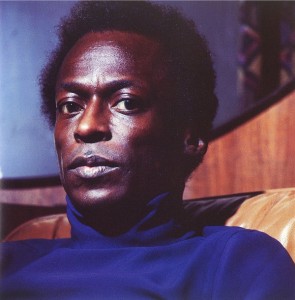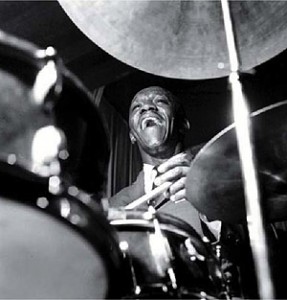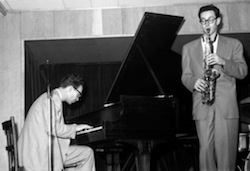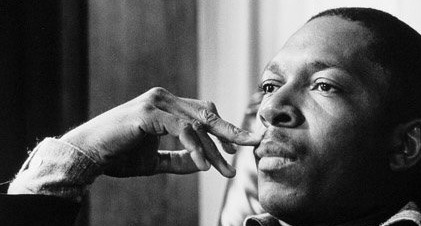I couldn’t get the girls downstairs tonight for any picks, so I grabbed Leon Parker’s ‘Belief’, then my set of Wilhelm Kempff’s recordings of the Beethoven Piano Concertos (with Berlin and Ferdinand Leitner… one of TWO complete recordings I have with Kempff)… then I grabbed the Harmonia Mundi box set of Kenneth Gilbert’s Bach keyboard works… then Beethoven’s Diabelli Variations by Alfred Brendel (on Vox Box)… then I decided ‘well, maybe I’ll get through all the Brendel Beethoven solo piano works’. As everything sits right now I am done with Leon Parker and the Kempff recordings, and am about halfway through the Kenneth Gilbert. We’ll see how far I get tonight (the Brendel stack is 15 CDs… I’ll be surprised if I finish them).
Leon Parker’s disc is one of my favorite non-avant-garde contemporary jazz discs. That’s a lot of qualifiers, but I think most serious jazz listeners can understand (if not agree) with the need for them. ‘Belief’ is a very accessible disc but at the same time doesn’t fit into the ‘rock with words’ world of most mainstream jazz. There are elements of 20th century minimalism, some sharp, punctuated horn playing, and lots of good percussion (which is what Leon Parker plays). The album closes off with a great, sparse version of ‘In a Sentimental Mood’, but the stand out on the album is ‘Calling Out’. After buildup and crash of cymbals, a percussive ostinato starts up, followed by additional layers of vocal patterns that keep getting added to create a dense vocal / percussive heterophony that certainly owes quite a bit to West African music.
But right now I have the Beethoven concertos on. I love Wilhem Kempff’s playing. And these performances (and recordings) are beautiful. One of my fondest orchestra memories was playing the 5th concerto one summer. Steve (another bass player who also actively performed in a Black Sabbath cover band) taps my shoulder with his bow during one of the piano solo parts in the first movement during a rehearsal. I turn around, and he is pretending to tap his bass strings a la an Eddie Van Halen solo, in perfect rhythm to the soloist. Of course – Steve completely called it. This IS the Eddie Van Halen solo music of the 18th century (and I mean that in the best, most bad ass way it can be taken – early Van Halen shredding at its best). 3 seconds of pantomime summed up Beethoven’s 5th piano concerto for me better then any history book or paper on the piece I ever read.
The Brendel recordings (that I just might get to tonight) are his first recordings of the Beethoven solo repertoire. He would go on to record the sonatas two more times on Phillips (and may have even done one more set as he was preparing to retire… i heard something about that??? did he???). While he later set (from the 90s) is certainly very interesting to listen to, the set on Vox Box is probably my second favorite set (after Kempff’s set). I remember when I bought them… the classical manager at the time scoffed at me for ‘being willing to touch those dirty things’… Vox Box… the dusty budget set in its own rack that he felt didn’t deserve even to be shelved much less purchased. But, the joke is on him. There were some great older recordings that Vox Box put out, and I’m certainly glad I didn’t let his classical snobbery deter me. After he left and I was given more control over classical purchases at the store, the memory of his pricing snobbery bothered me so much that one of the first things I did was order one of every Naxos title. I though then (and still firmly believe) that it shouldn’t cost a fortune to explore classical music. Or any music for that matter… but at least with classical music, you could get to know repertoire for a reasonable price as long as the guy at the counter was willing to suggest those discs to a new customer. Sure, they aren’t always ‘the best’, but they are often quite good and you will get to hear more when you are just starting out that way.


